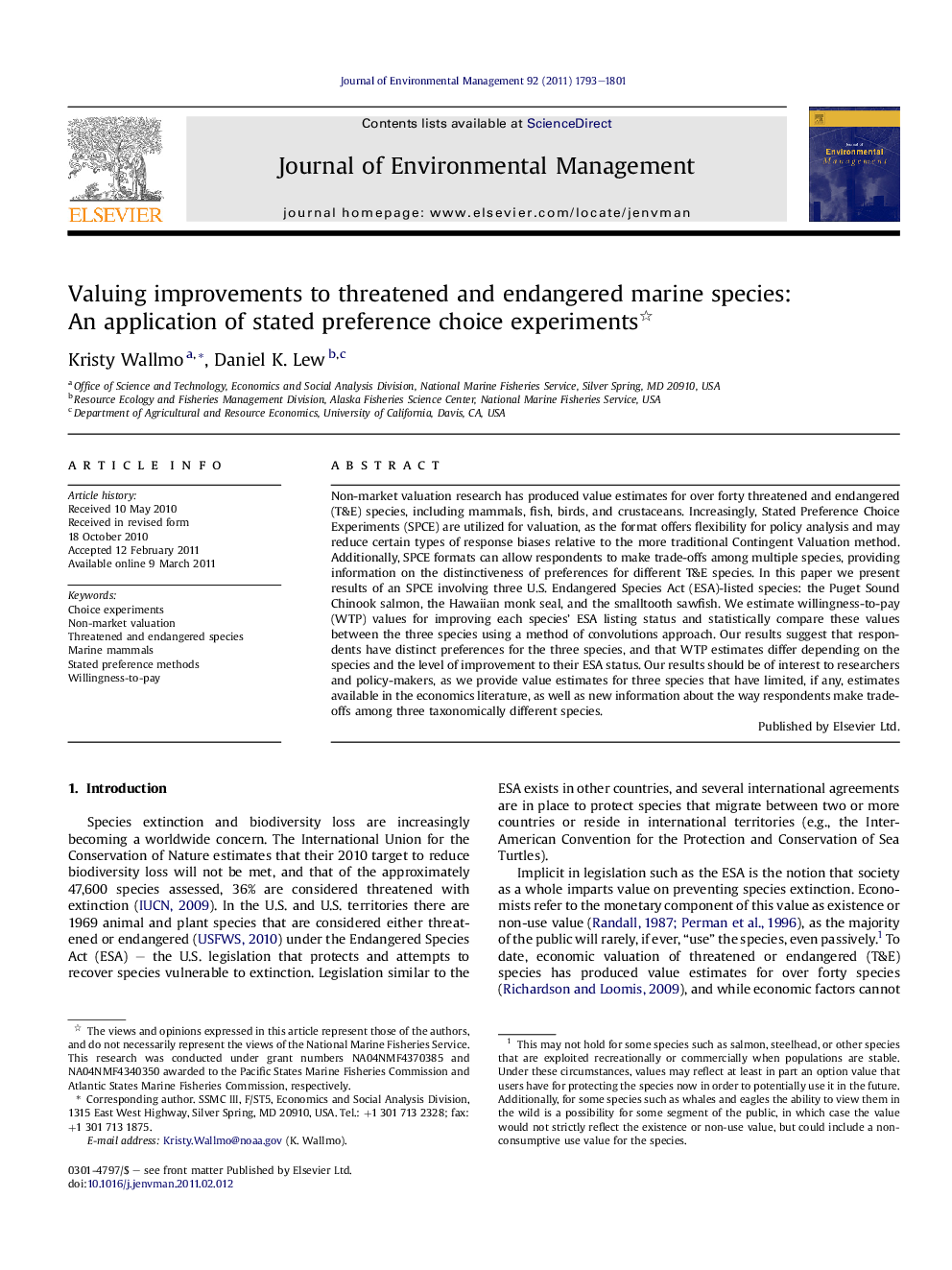| Article ID | Journal | Published Year | Pages | File Type |
|---|---|---|---|---|
| 1057162 | Journal of Environmental Management | 2011 | 9 Pages |
Non-market valuation research has produced value estimates for over forty threatened and endangered (T&E) species, including mammals, fish, birds, and crustaceans. Increasingly, Stated Preference Choice Experiments (SPCE) are utilized for valuation, as the format offers flexibility for policy analysis and may reduce certain types of response biases relative to the more traditional Contingent Valuation method. Additionally, SPCE formats can allow respondents to make trade-offs among multiple species, providing information on the distinctiveness of preferences for different T&E species. In this paper we present results of an SPCE involving three U.S. Endangered Species Act (ESA)-listed species: the Puget Sound Chinook salmon, the Hawaiian monk seal, and the smalltooth sawfish. We estimate willingness-to-pay (WTP) values for improving each species’ ESA listing status and statistically compare these values between the three species using a method of convolutions approach. Our results suggest that respondents have distinct preferences for the three species, and that WTP estimates differ depending on the species and the level of improvement to their ESA status. Our results should be of interest to researchers and policy-makers, as we provide value estimates for three species that have limited, if any, estimates available in the economics literature, as well as new information about the way respondents make trade-offs among three taxonomically different species.
